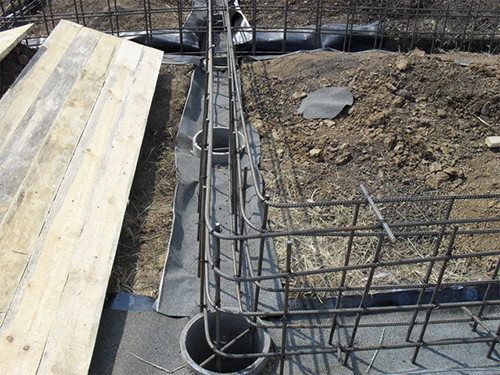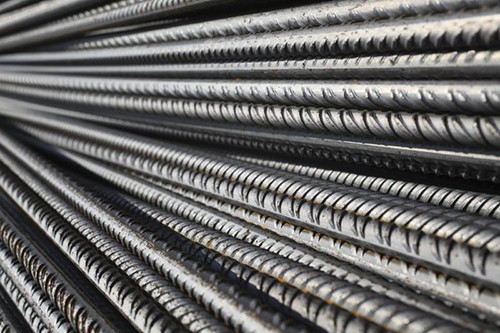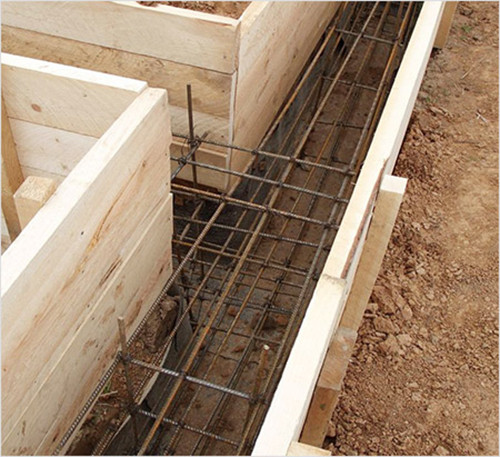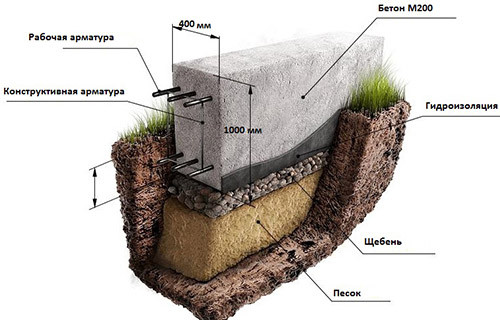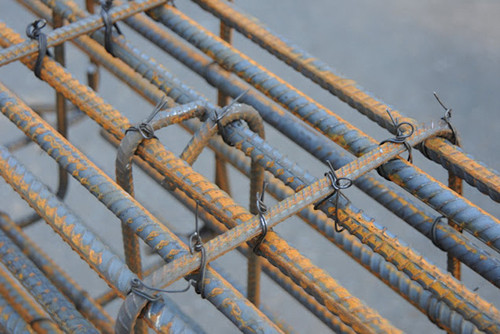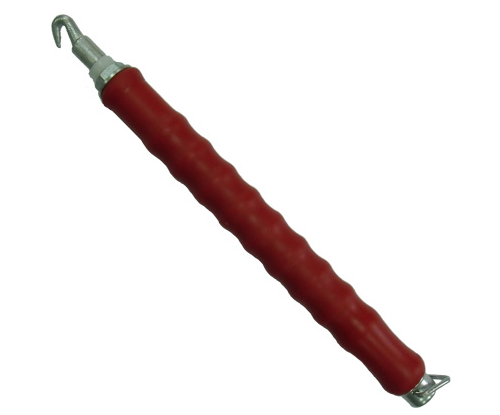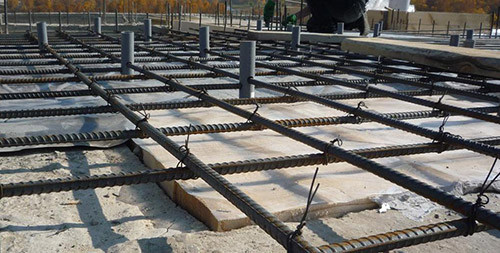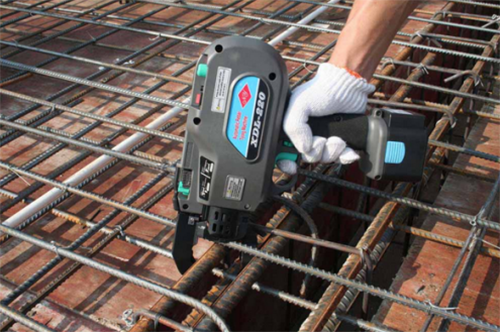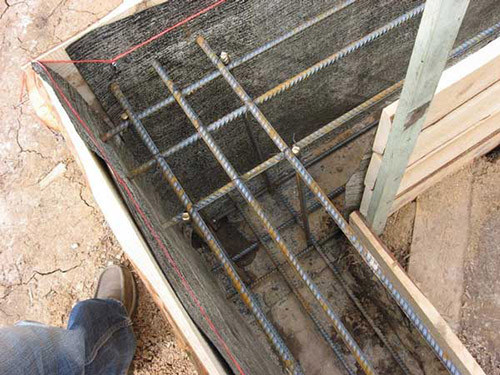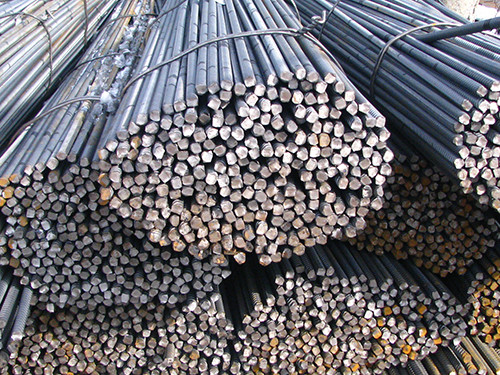
Calculation of reinforcement for a belt foundation: Rules and examples Construction
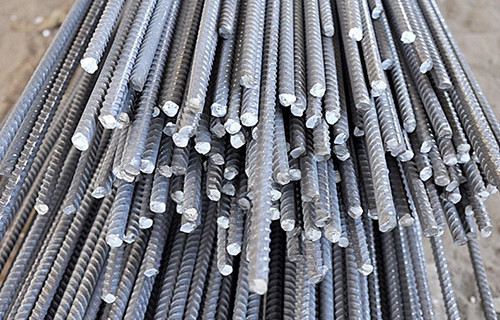
Even the most inexperienced builders know that for the construction of any facility, whether it is a residential building, a terrace or a garage, it is necessary to make a foundation. There are several types of foundations, but the belt is the most common, especially when it comes to a private residential building in several floors with a cellar or basement. In order for the base design to be durable and was able to withstand the weight of the house of the house with all the contents, it needs to be strengthened. For this use special metal rods. In this article we will tell how to calculate the reinforcement for a ribbon foundation.
Content
Appointment of fittings
When building a house, special attention should be paid to three things: the foundation, the bearing walls and the roof. But the foundation among everything else is the fundamental detail, on which the durability and strength of the whole building depends. If the walls can be repaired, and the roof is replaced, then it is often necessary to replace the cracked or twisted foundation. In order to avoid such troubles, it is better to approach work with all seriousness and how to strengthen the foundation of the reinforcement.
The ribbon foundation for the construction of residential buildings in the private sector is used most often, since it allows the basement to build, ensures reliability and stability of the entire structure, and also differs in enviable durability - with the competent calculation and the use of high-quality building materials, it will take 100-150 years without overhaul. In addition, the belt foundation is suitable for most types of soils available in Russia. In the case of bunched and unstable soils, it can be strengthened, but it will still cost cheaper than the installation of a monolithic base.
The fittings of the foundation represents the similarity of the "skeleton" to which concrete is firmly attached. The iron construction inside evenly distributes the load on the base and on the soil. There is a permissible minimum of reinforcement, which must be contained in a bellbed bantle foundation. This is described in detail in the appropriate SNiP called "Concrete and R / B Constructions". In short, the standard belt foundation must contain reinforcements in an amount of at least 0.1% of the total area of \u200b\u200bthe reinforced concrete element. Based on this, it becomes clear that the calculation of the valve for a ribbon foundation should include the ratio of the size of the tape and the cross section of metal roths.
The correctly selected scheme of reinforcement is able to extend the life of the belt foundation up to 100 years and longer.
How to choose fittings
At first glance, it seems that concrete is incredibly durable material, but in fact the slightest shuttle moves or underground shocks are capable of quickly destroying it. Therefore, reinforcement was invented for its strengthening. What reinforcement is suitable for a ribbon foundation in each particular case, it is necessary to solve depending on the future load on the base, the characteristics of the soil and the scale of construction.
The rod surface is characterized by ribbed - this is necessary for better adhesion with cement-sandy solution. The calculation of the load on the foundation must be carried out at the stage of development of the project of the future at home. To do this, there are special formulas and online programs, but since it is a very serious task for a beginner, it is better to trust it with specialists. You can save on the construction of the house and even need, however, it is necessary to properly arrange priorities - so that the house will be strong and reliable, it is necessary to insert a maximum to the foundation.
In most cases, for filling ribbon foundations for private houses in 2-3 floors, reinforcement bars with a diameter of 10 mm and 12 mm. Sometimes it is possible to purchase products with a diameter of 14 mm, but only if the load on the building is large or in the future you plan to finish the floors. You should always look a little challenged, perhaps, after 10-20 years, you want to replace the usual duplex roof on a flat operated roof with a greenhouse or workshop.
The diameter of the reinforcement for the belt foundation of small buildings like garages, houses for guests and sheds can be 8 mm. However, it is recommended to install such rods only on non-empty stable soils.
The specificity of the reinforcement of the foundations
Any belt foundation has two parts: the top, which takes the load from the house box, and the lower (sole), which transmits this load into the ground. To make the most durable and durable foundation, you need to strengthen both these parts. To do this, put the arm of the reinforcement so that two horizontal parallel rows are obtained connected by shorter elements.
Thus, we closely approached the methods of mating fittings, which also affect the required number of rods. But before going into details, consider in general terms, the armature scheme for a ribbon foundation.
Longitudinal parallel running bars take over the main load from the house box in the stretch zones. Vertical jumpers play the role of a frame and attach the foundation for a cut. It is usually enough to lay 4 horizontal rods - 2 at the top and 2 below.
The number of transverse rods is determined by the length of horizontal elements. To ensure proper strength, they should be placed at least as 30 cm from each other. The distance between vertical jumpers, again, depends on the load on the foundation and scale of construction. The maximum allowable step is 80 cm. In contrast to the longitudinal reinforcement, the crossbar does not have such a pronounced ribbed surface. In addition, they are more subtle, but this does not affect the overall durability of the frame, if you make all the details correctly.
Another important point is to protect the reinforcement from corrosion. Imagine that during the spring thaw, the ground began to move, and a tiny crack appeared in the concrete wall of the foundation. Over time, it becomes more and more, the underground and sedimentary waters are blocked, and the moisture reaches the reinforcement. She starts rust, the foundation loses strength and collapses. Joyless perspective, right? To prevent such a development of events, it is necessary to cover the reinforcement of the anti-corrosion composition, to impregnate the foundation outside (after frozen) with hydrophobic primer of deep penetration, pave the external waterproofing (rubberoid, bituminous mastic, etc.) and make a drainage from a minimum width of 1.5 m. Another precautionary measure is to shut down the reinforcement into the concrete at least 5 cm.
Methods of mating fittings
There are several techniques for connecting longitudinal reinforced elements with transverse rods, each of which is distinguished by the degree of strength and complexity. Some schemes are designed for light buildings, others are designed for serious loads. Depending on the selected method, you can determine the required amount of reinforcement. We describe the most common viscous options.
Depending on the selected method, you will need the following tools:
- hook for mating (you can do or buy in the store);
- nippers;
- screwdriver;
- pliers;
- knitting wire;
- paper clips;
- knitting gun;
- welding machine.
As for the last tool, it is worth a little clarify. The fact is that experts do not recommend welding fittings for foundations, since the locations of the elements are potential points of rust. Also, fasteners are not sufficiently durable and can be collapsed on the moment of the fill of concrete.
Manual bid
For this method, you will need steel wire with a diameter of 0.8 mm to 1.2 mm in bays or a bar 10-20 cm long. The essence is to fold the two elements folded in half and tighten it with round nippers or pliers. You can use a special crochet. The wire should also be folded in half to get a loop, through this loop to turn the hook, free end to wind around the binding elements and also hook a hook. Then remains to drag them through the loop, scroll through the hook to fix the connection.
Useful advice: To speed up the knitting process, purchase a special screw hook.
Another method of manual mating of reinforcement - with the help of a screwdriver. To inhale the cartridge in the hook, then when you turn on it will be yourself in a couple of seconds firmly twist the wire.
This technique is simple and cheap, but the compounds may be not dense enough, and the same mating quality is not possible on all segments possible. As a result, the risk of nodes displacement.
Various steel wire clips are also used to mating fittings. Tools for this are not needed - they are simply tightened manually. For this reason, the speed of mating grows 3 times compared to the crochet, no experience and skills need to work for work, the reinforcement is connected tight enough. Alternatively, steel paper clips can be taken plastic clamps. However, this option is more applicable to creating a framework of a foundation for light country houses or other small buildings.
Knitting gun
If you have large amounts of work, then it is better to reduce the laboriousness, it is better to use a knitting gun, and not to turn the wire manually. There are electrical and mechanical pistols. To create mount, install the nozzle to the desired place, turn on the gun, and the rest of the work it will do myself.
The power tool is very convenient because it works autonomously, and the wire is supplied from replaceable coils, like the cage, like a real gun. As a result, pretty strong compounds are obtained, and there is practically no excess wire (trimming). On the creation of one point of attachment takes 1-2 seconds. The disadvantages include the high cost of the knitting pistol, the need for preliminary preparation. It is also impossible to work in hard-to-reach places of the frame - there will have to be twisted manually or tighten the brackets.
To get a complete picture of this work, we offer to watch a video, how to properly knit fittings for a ribbon foundation:
Calculation of fittings
To know exactly how many fittings are needed for the foundation, it is necessary not only because there is a risk of buying too little or too much material. The rods themselves are relatively inexpensive, but the delivery can "fly to a penny", if in the process it turns out that it is necessary to immediately go to buy again. Yes, and it is unlikely that anyone will want to buy material with excess so that it is then ass dead in a shed or garage.
To calculate the required number of longitudinal reinforcement, you must first learn the perimeter of the future facilities. Since the belt foundation passes not only around the perimeter, but also under all the walls and partitions, add the amount of lengths of all walls to the resulting value. After that, it remains to multiply this digit to the number of rods in the selected armature mating scheme.
To be clearer, consider the calculation of the reinforcement on the example of a small house of 5x6 m with one wall inside a length of 5 m. Suppose that for the reinforcement scheme requires 4 horizontal rods with a diameter of 12 mm.
We make calculation:
- Find the perimeter of the house box: 5 * 2 + 6 * 2 \u003d 10 + 12 \u003d 22 m.
- Calculate the total length of the foundation, taking into account the length of the internal partition: 22 + 5 \u003d 27 m.
- Since there are 4 longitudinal rods for the mating scheme, we find the total length of the reinforcement: 27 * 4 \u003d 108 m.
- As you can see, nothing is difficult in it, but go to the construction store is still early. Consider that often the length of the rod of the reinforcement lacks the whole wall, and then it is necessary to build up. For this, the longitudinal elements are imposed on each other with the allen at least 1 m. For this reason, first draw a detailed assembly of fittings, take into account all the adhesive and add them to the overall result.
- In our case, the house fell small, so let him say that he will have one to build a rod on each wall. We remind you that in accordance with our mating scheme you need 4 rods (you may have another number), then it turns out that 4 rods * 5 walls \u003d 20 adhesives. Accordingly, it will take 20 m reorgana more.
But you should not forget that there must be across the longitudinal rods - more subtle and smooth fittings. It will be needed to create vertical racks. Suppose the distance between the jumpers will be 50 cm. Then, to find the total number of reinforced segments, it is necessary to divide the total length of the foundation by 50 cm (0.5 m).
27 / 0.5 \u003d 54 pcs
With a height of the reinforced array of 50 cm and the distance between the rods 25 cm, the calculation of the required number of smooth reinforcement will look like this:
(0.5 m + 0.25 m) * 2 \u003d 1.5 m
So we found the perimeter of one reinforced segment inside the knitting.
54 * 1.5 \u003d 81 m - the total amount of fine fittings.
When calculating the reinforcement for crossbar and vertical racks, the adhesive and allowances must also be considered. Unfortunately, there is no formula for calculating this indicator, so you have to choose "on the eye". According to the recommendations of specialists, it is better to add about 10% to the resulting result.
In our case, it is: 81 + 10% \u003d 89.1 m (in order not to torment themselves, no employees of the construction store, round the figure in a large side up to 90 m).
Finding rods and reinforcement sold on the Method is almost impossible. Typically, the price does not depend on the length, but on the total weight of the product. This weight is fixed, and the requirements for enterprises for the production of metal rolling are clearly described in GOST 5781-82.
The weight of the rod reinforcement depends on the diameter:
- 8 mm - 0.222 kg / m;
- 10 mm - 0.395 kg / m;
- 12 mm - 0.888 kg / m;
- 14 mm - 1,210 kg / m.
Having calculated the total weight of the reinforcement, you can find out how much its cost and delivery will cost. Since the foundation of the foundation of our house was chosen for a 12 mm thick for fillings, the calculation looks like this:
128 * 0.888 \u003d 113,664 kg.
The diameter of the smooth rod for the crossbar is 10 mm:
90 * 0.395 \u003d 35.55 kg.
Transferring all these numbers to the cash units, it may seem that the amount is quite impressive, but the price of the finished railway design is entirely justified by its serious functional load - without a strong foundation it will not be a strong house. Armature in the belt foundation is an indispensable component. Make a solid foundation in the presence of all necessary materials will not be much difficult.




